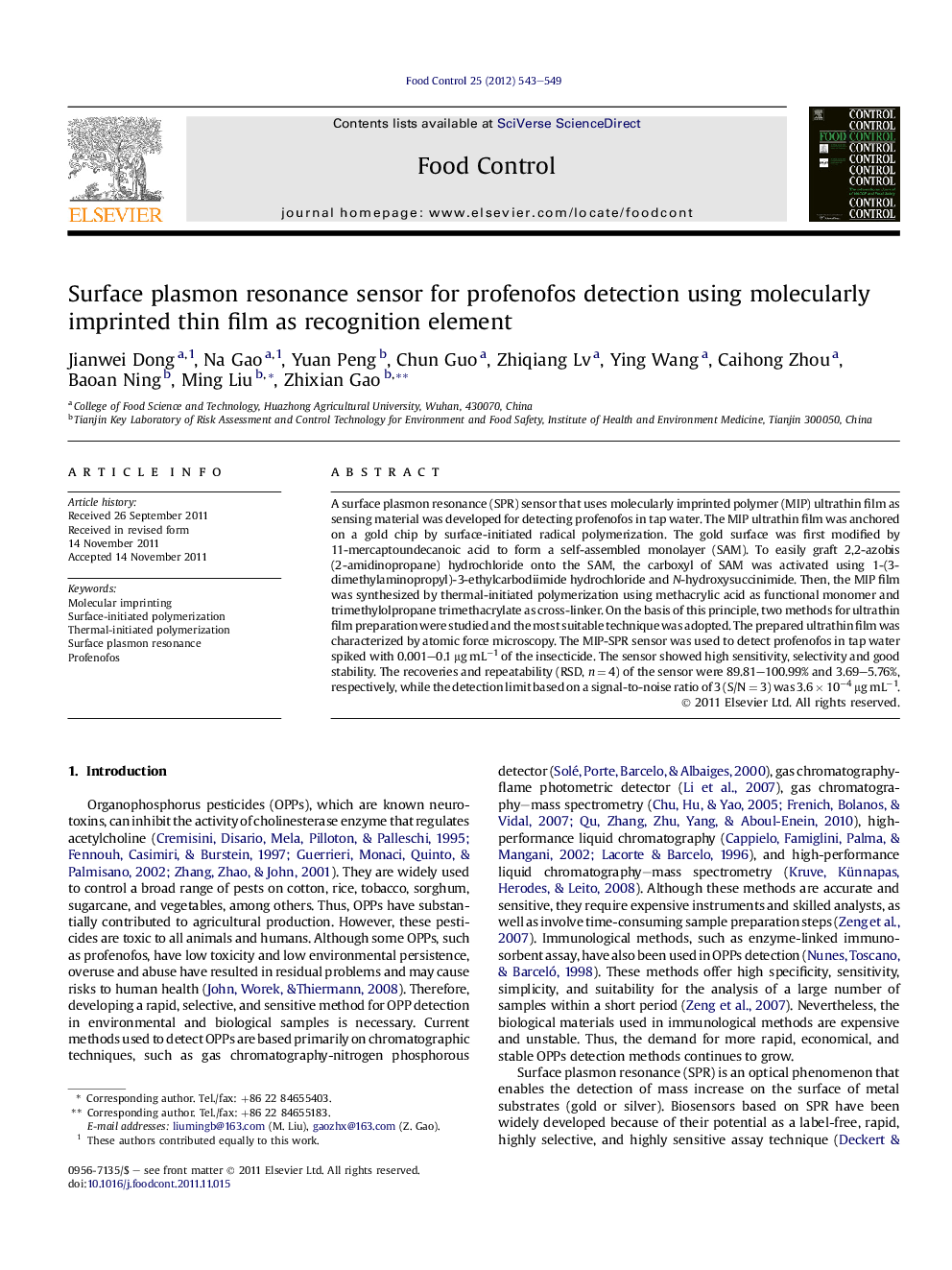| Article ID | Journal | Published Year | Pages | File Type |
|---|---|---|---|---|
| 6393584 | Food Control | 2012 | 7 Pages |
A surface plasmon resonance (SPR) sensor that uses molecularly imprinted polymer (MIP) ultrathin film as sensing material was developed for detecting profenofos in tap water. The MIP ultrathin film was anchored on a gold chip by surface-initiated radical polymerization. The gold surface was first modified by 11-mercaptoundecanoic acid to form a self-assembled monolayer (SAM). To easily graft 2,2-azobis (2-amidinopropane) hydrochloride onto the SAM, the carboxyl of SAM was activated using 1-(3-dimethylaminopropyl)-3-ethylcarbodiimide hydrochloride and N-hydroxysuccinimide. Then, the MIP film was synthesized by thermal-initiated polymerization using methacrylic acid as functional monomer and trimethylolpropane trimethacrylate as cross-linker. On the basis of this principle, two methods for ultrathin film preparation were studied and the most suitable technique was adopted. The prepared ultrathin film was characterized by atomic force microscopy. The MIP-SPR sensor was used to detect profenofos in tap water spiked with 0.001-0.1 μg mLâ1 of the insecticide. The sensor showed high sensitivity, selectivity and good stability. The recoveries and repeatability (RSD, n = 4) of the sensor were 89.81-100.99% and 3.69-5.76%, respectively, while the detection limit based on a signal-to-noise ratio of 3 (S/N = 3) was 3.6 Ã 10â4 μg mLâ1.
⺠Using thermal-initiated polymerization synthesis MIP ultrathin film on gold chip. ⺠Studying two methods for preparing MIP film and a suitable one was adopted. ⺠We can control the thickness of the film 20 ± 5 nm. ⺠Fabricating the MIP -SPR system for detecting profenofos. ⺠The MIP -SPR system film has high selectivity and sensitivity for profenofos.
